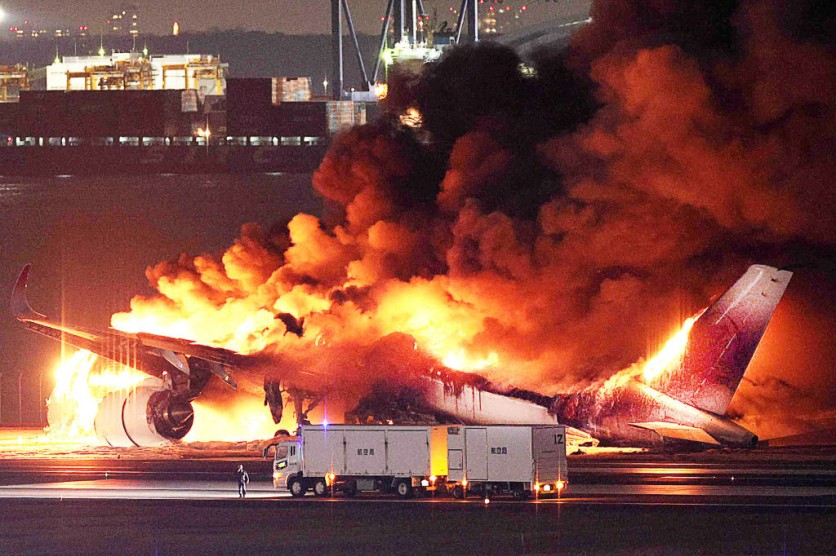Accidents like "runway incursions" pose significant threats, with historical precedents like the tragic collision of two 747s on a foggy Canary Islands runway in 1977, resulting in 583 fatalities among the 644 people on board.

Japan Airlines Crash
Similarly, the recent incident at Tokyo's Haneda Airport involved a Japan Airlines A350 crashing into a Japan Coast Guard Dash 8.
Considering the potential severity, it's remarkable that there were no fatalities and only 11 injuries on the A350. Unfortunately, the situation on the Dash 8 was more dire, resulting in the loss of five out of six crew members.
The Verge reported that the relatively mild aftermath underscores the strides made in engineering within the latest airliner models and the safety ethos ingrained in premium carriers like Japan Airlines.
The near-miraculous preservation of passengers' lives should not overshadow the systemic issues exposed by the occurrence of the accident itself. Without substantial changes in protocols and technology, a recurrence of such crashes is probable, with potentially graver consequences.
How It Happened
Originating from Hokkaido, Japan's northernmost major island, JAL Flight 512 was approaching Tokyo on a brief two-hour flight.
A350s, typically reserved for long-haul journeys like Hong Kong to Los Angeles in other regions, are utilized by Japan for high-capacity transport to compete with the nation's efficient high-speed rail network.
Despite the standard A350 long-haul configuration accommodating around 300 passengers, JAL 512, configured for shorter routes, carried 367 passengers and 12 crew members.
Approaching Haneda from the southern direction, the airliner made contact with runway 34R upon landing. It seems that the pilots either overlooked or didn't have sufficient time to respond to the De Havilland Canada DHC-8, which had taxied into its path.
The Dash 8, a twin-engine turboprop commonly utilized by feeder airlines for short-distance flights, was reportedly en route to western Japan to aid in relief operations following a significant earthquake the day before.
Footage from the Associated Press captured the moment of impact reveals a sudden burst of fire, followed by the A350 emerging from the flames with its nose and engine cowlings scraping along the runway, indicating the potential collapse of its nose landing gear during the collision.
After coming to a stop, passengers swiftly descended on inflatable slides and fled to safety as flames engulfed the rear of the aircraft, gradually spreading to consume the fuselage.
How They Survived
The incident represents the first instance of the destruction of an A350 since its introduction in 2015, making it a pivotal case for studying how this aircraft type withstands extreme stress.
Similar to Boeing's 787, New York Magazine reported that the A350 is predominantly constructed with carbon-fiber composite, distinguishing it from older aluminum-based aircraft.
This composition renders it both lightweight and durable, evidenced by the A350's ability to maintain structural integrity in the forward section despite the collision with the Dash 8.
Notably, carbon fiber, while combustible, burns slowly compared to aluminum. This characteristic afforded passengers ample time to evacuate, exemplified by the largely unscathed cockpit and forward part of the A350 post-collision.
The evacuation process, a critical aspect of the incident's positive outcome, involved the challenge of swiftly disembarking 379 individuals from a burning aircraft.
Video footage shared by passengers on social media revealed flames from the burning engines after the initial impact, emphasizing the importance of a well-trained flight crew in preventing panic and facilitating an orderly evacuation.
Related Article : More Airports Rely on AI to Recover Missing Items of Travelers

ⓒ 2025 TECHTIMES.com All rights reserved. Do not reproduce without permission.




